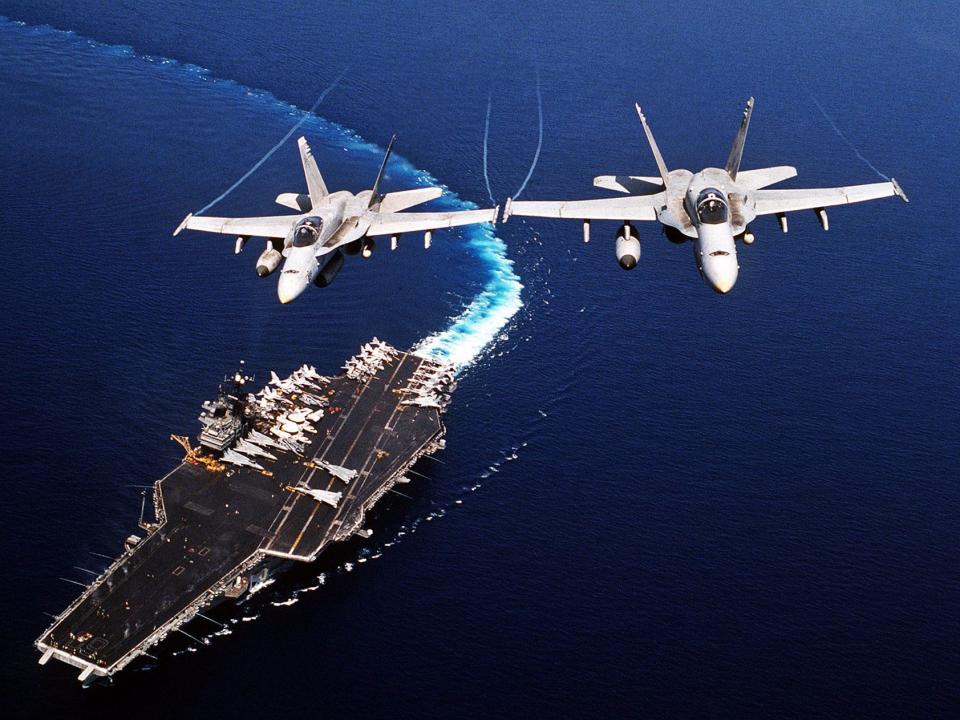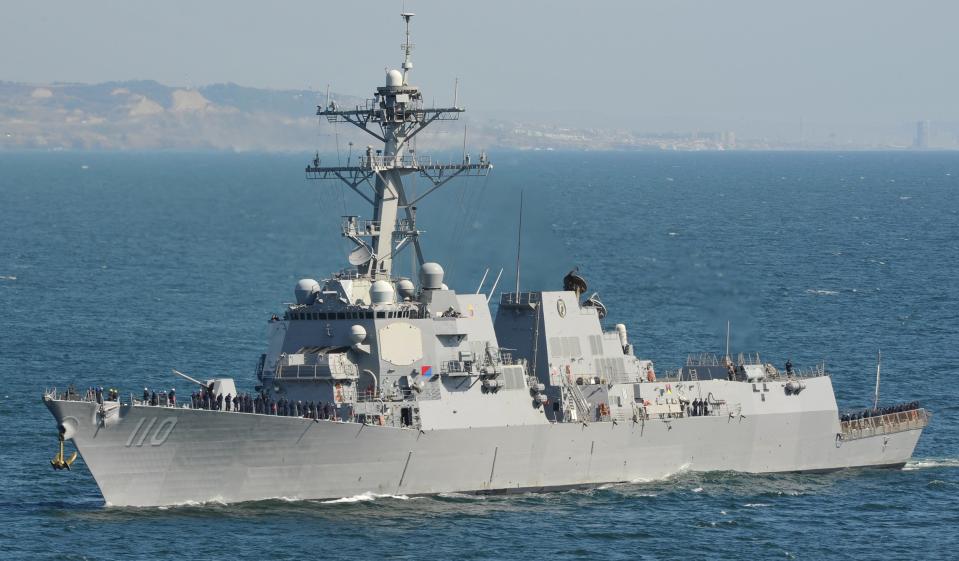The age of aircraft carriers could be coming to an end
S

ince World War II, flat-topped aircraft carriers have been the backbone of US power projection and military might at sea, but a new generation of long-range missiles being developed by the US's adversaries could push these mechanical marvels off the frontlines.
The US's massive aircraft carriers have a problem. The F-18s aboard US aircraft carriers have a range of about 500 nautical miles, as noted by Ben Ho Wan Beng at the US Naval Institute.
The incoming F-35Cs are expected to have a marginally better range of about 550 nautical miles.
At the same time, China's aptly named DF-21 "Carrier Killer" antiship ballistic missile is said to have a range of 810 nautical miles and is capable of sinking an entire 1,100-foot carrier with 70 aircraft and 6,000 sailors on board.
Such long-range antiship missiles create areas (also established in the Baltics by Russia) in which the US can't position its most powerful assets, the aircraft carriers.
Aircraft carriers, which have been the star of the show since their emergence during World War II, may therefore end up taking a back seat to smaller vessels.
The US Navy has long been working toward achieving "distributed lethality," or a strategy that entails arming even the smallest ship with missiles capable of knocking out enemy defenses from far away. Engaging enemies with smaller ships also helps to keep extraordinarily valuable targets like carriers out of harm's way.

US Navy Photo
In fact, the Navy plans to have at least 40 littoral combat ships with a "full suite of anti-ship and anti-submarine sensors and weapons ... Plus such improvements as a medium-range 'over the horizon' missile to sink enemy ships," as Breaking Defense notes.
So instead of putting a carrier in harm's way, the Navy will most likely look to use longer-range platforms, like cruiser-destroyers that carry the Tomahawk land-attack cruise missile, which have a range of about 900 nautical miles.

US Navy Photo
In the end, a carrier strike group would no longer lead with the carrier.
Instead, destroyers firing Tomahawk missiles would initiate the attacks, softening up enemy anti-access/area-denial capabilities before the big carriers moved in closer to shore.
NOW WATCH: This is why US aircraft carriers are a force to be reckoned with
See Also:

 Yahoo Finance
Yahoo Finance 
